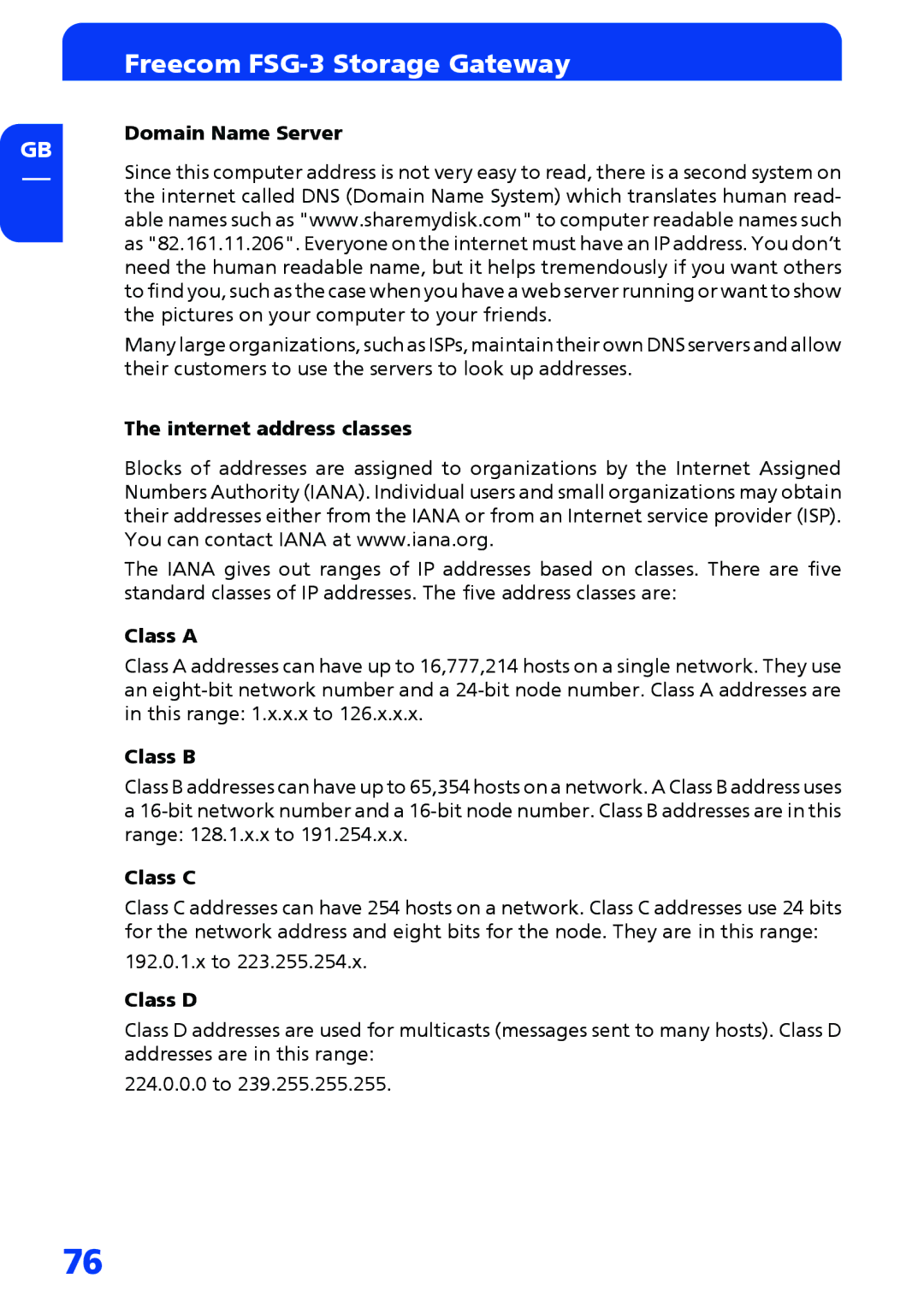
GB
Freecom FSG-3 Storage Gateway
Domain Name Server
Since this computer address is not very easy to read, there is a second system on the internet called DNS (Domain Name System) which translates human read- able names such as "www.sharemydisk.com" to computer readable names such as "82.161.11.206". Everyone on the internet must have an IP address. You don’t need the human readable name, but it helps tremendously if you want others to find you, such as the case when you have a web server running or want to show the pictures on your computer to your friends.
Many large organizations, such as ISPs, maintain their own DNS servers and allow their customers to use the servers to look up addresses.
The internet address classes
Blocks of addresses are assigned to organizations by the Internet Assigned Numbers Authority (IANA). Individual users and small organizations may obtain their addresses either from the IANA or from an Internet service provider (ISP). You can contact IANA at www.iana.org.
The IANA gives out ranges of IP addresses based on classes. There are five standard classes of IP addresses. The five address classes are:
Class A
Class A addresses can have up to 16,777,214 hosts on a single network. They use an
Class B
Class B addresses can have up to 65,354 hosts on a network. A Class B address uses a
Class C
Class C addresses can have 254 hosts on a network. Class C addresses use 24 bits for the network address and eight bits for the node. They are in this range:
192.0.1.x to 223.255.254.x.
Class D
Class D addresses are used for multicasts (messages sent to many hosts). Class D addresses are in this range:
224.0.0.0 to 239.255.255.255.
76
